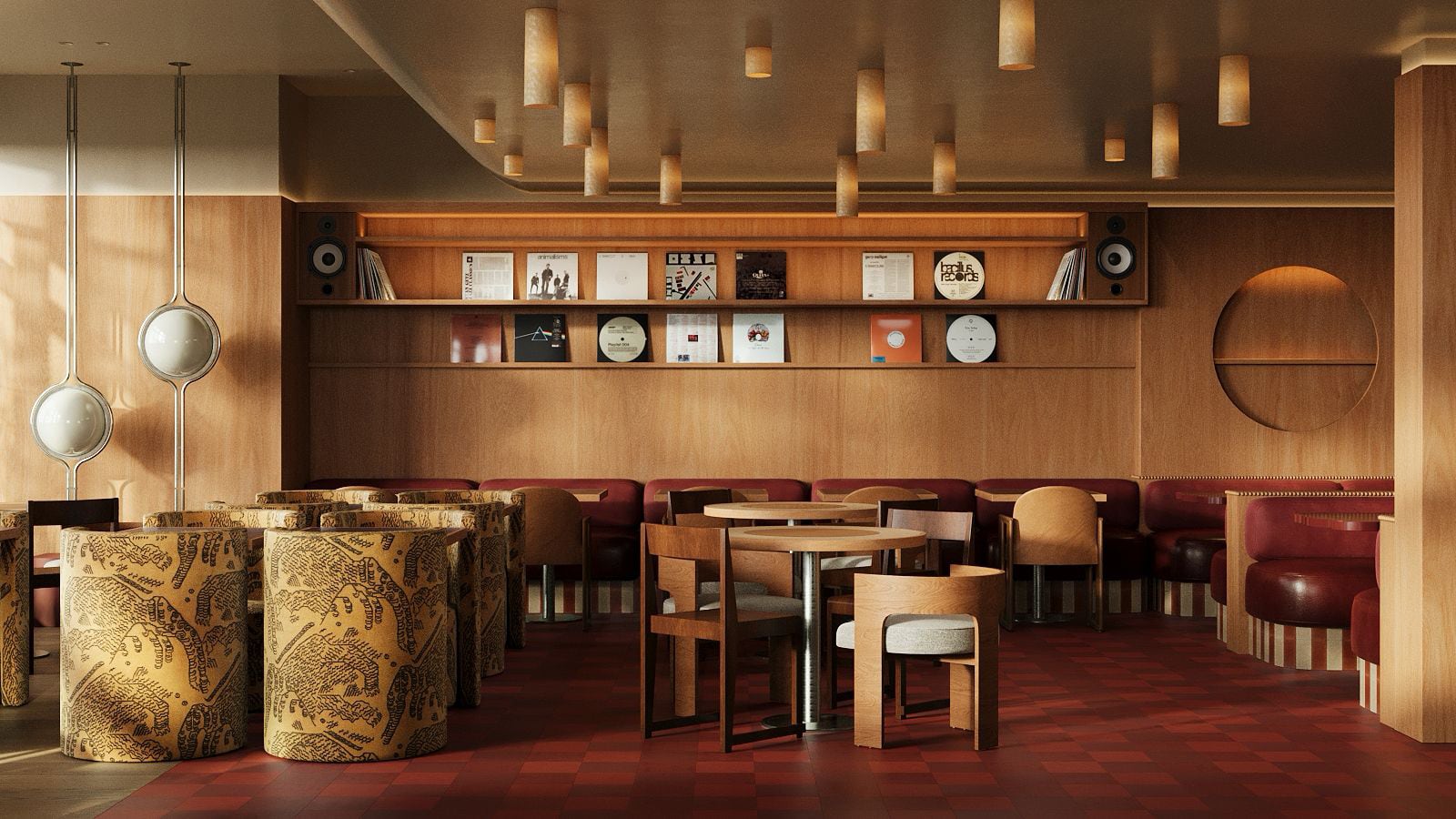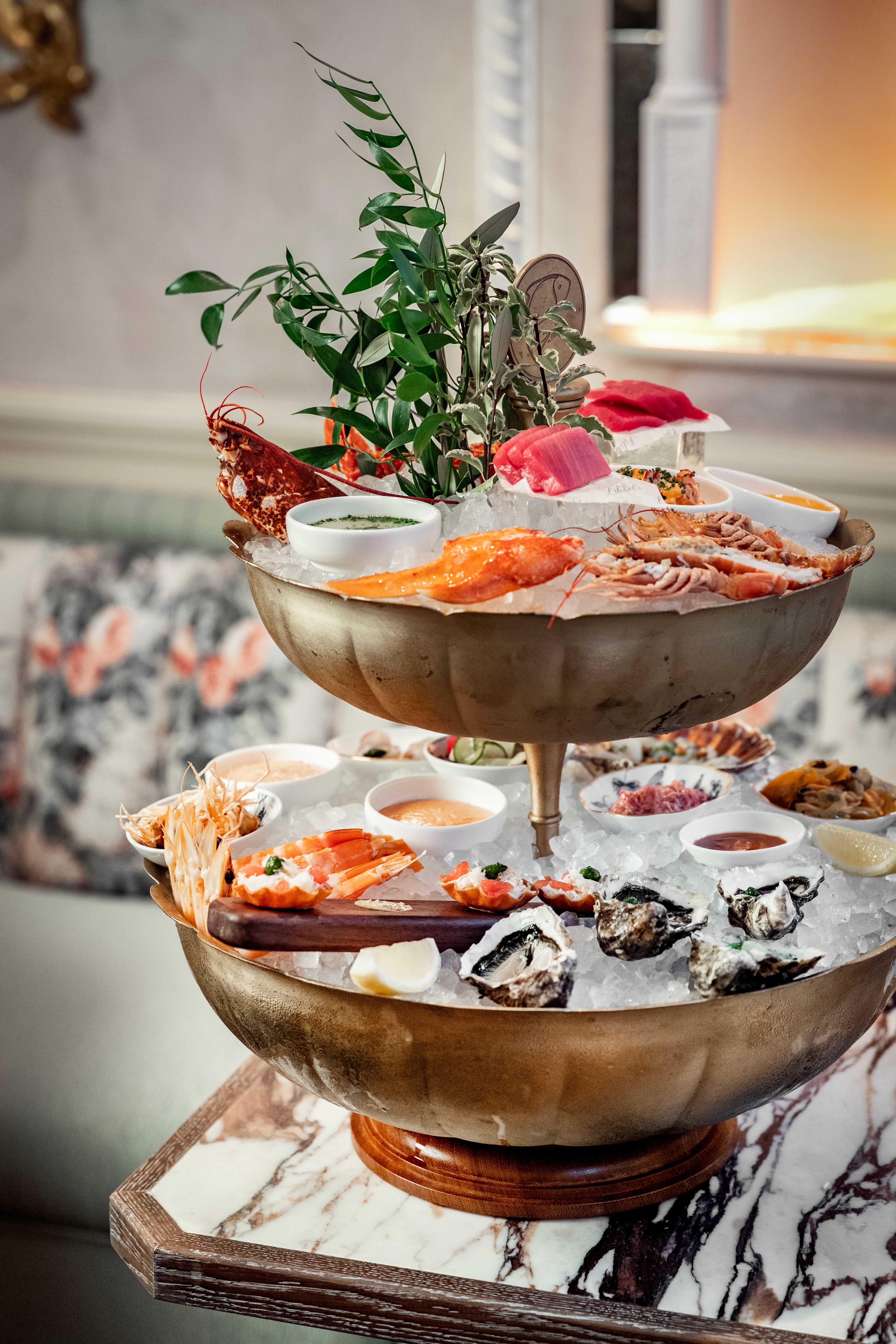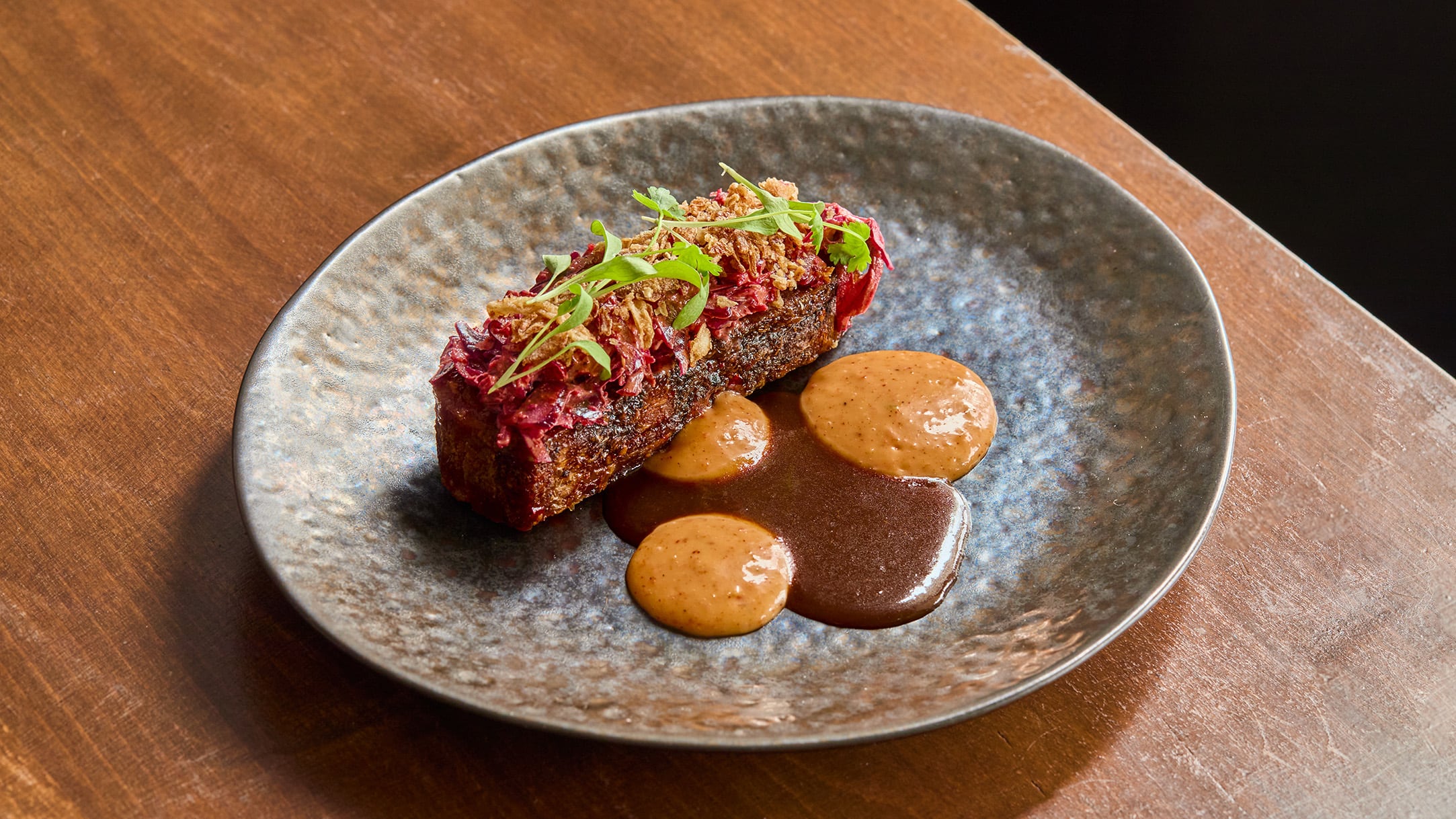Protein power

When, in January this year Tesco revealed that its egg protein pot - rather than a grab bag of crisps or a bar of chocolate - was its bestselling side in its meal deal its rubber stamped a trend that had been building in the retail sector for some time: people have become obsessed with protein. Retail shelves now groan under the weight of products promoting their high protein content - from protein bars and higher protein variants of existing snack bars, to cereals, bread, yoghurts and even water - and the hospitality sector has taken note. In July Pret stepped on the protein pedal with the launch of its Super Plates salad range that put its high protein content front and centre. The salads, which are 60% bigger than Pret’s existing salad range, include The Chipotle Chicken variant, which has 49g of protein; The Miso Salmon meal (36G); and The Shawarma (49g). More recently new QSR player Protein,mate has entered the London market. As its name suggests, the brand, founded by Australian-born entrepreneur Luke Fredberg, has protein content as a main selling point, with its customisable meals each delivering between 30g and 50g of protein. Protein as become the new buzzword for health-conscious diners, and it’s likely more dining out brands will jump on the trend more conspicuously in the coming year.
Shareable desserts

There is a theory among some chefs that a good dessert should leave the diner wanting more, that it should be a full stop at the end of a meal that is indulgent but not over-facing. Another school of thought exists, however, one that has been put into practice a lot during 2025, and that’s for a dessert that pulls no punches in terms of size. At Italian/American restaurant Carbone, which recently opened a site in Mayfair, huge desserts are wheeled out on a trolley and often steal the show, and at the new Kudu in Marylebone you can order its Durban pineapple dessert, which is priced at £50 and which is big enough for three or more people to share and which comprises cardamom brûlée, spiced pineapple, a Kudu kit kat, coconut soft serve, and brandy canelés. Large and shareable desserts are becoming an important feature of the dining experience, says Karen Poole, head of own brand at Booker. Poole says that guests increasingly want moments that encourage interaction and conversation and that sharing and grazing dessert boards lend themselves to this. “This shift reflects broader changes in how people dine out. When presented well using quality components, dessert sharing boards bring the wow factor to any dining experience and create inspiring social media content, encouraging others to visit and explore menu choices,” she says. “This format suits every occasion from celebrations to casual group bookings, and the visual drama of a well-styled board has become a draw in itself.” Pool adds that classic comfort desserts are finding new life in this trend. “Sticky toffee pudding or tiramisu, served family-style for guests to help themselves, add warmth and informality to the experience.” Steakhouse chain Miller & Carter’s chocolate bar dessert, is an example of this. The dessert, which is designed for sharing, recently went viral on social media for its size and decadence. Meanwhile, at Mezzogiorno by Francesco Mazzei, the newly opened restaurant from the Calabrian chef, a classic ‘giant’ tiramsu graces the desserts option. “The key for 2026 will be versatility: desserts that can adapt to different dining occasions and group sizes while maintaining that sense of theatre and shareability diners now expect,” says Poole.
Booker's dessert range is tailored to the busy foodservice sector
Created with chefs in mind, Booker's dessert range offers a streamlined selection of 23 versatile, easy-to-serve options tailored to the busy foodservice sector. Carefully curated to balance classic favourites with trending flavour combinations, the range ensures there's something to suit every menu, venue, dining occasion and price point.
Organised under three tiers - Chef's Essentials, Chef's Menu, and Chef's Premium, the range features 15 new frozen SKUs in convenient formats including pre-sliced portions, trays, bars, and individual servings, simplifying storage, preparation, and plating. Simple to prepare and serve within fast-paced kitchens, this practicality enables establishments to elevate their dessert menus without adding complexity to kitchen workflows.
The collection includes comforting classics such as its Chef's Menu Bakewell Frangipane, Sticky Toffee Pudding Squares, and Tiramisu - popular staples diners enjoy time after time. With pistachio continuing to trend, the Salted Pistachio Semifreddo and Pistachio, Raspberry & White Chocolate Roulade offer stylish, time-saving options that can be garnished with fresh fruit or crushed pistachios.
Chocolate lovers are well catered for with Chef's Essentials Chocolate Fudge Traycake, White Chocolate & Raspberry Tartlets, and indulgent Chocolate Fondant. These versatile desserts work as individual portions, sundaes, or features on sweet grazing boards.
Beyond the new additions, Booker stocks an extensive range of hot and cold desserts, pies, tarts, cheesecakes, crumbles, brownies and cakes and showstopping finales designed to impress diners and encourage repeat visits. Booker's dessert portfolio provides restaurants with reliable solutions for offering variety and appealing to diverse taste preferences, ensuring memorable dining experiences from first bite to last.
The wholesaler supports foodservice operators with professional nationwide delivery services tailored to restaurant requirements, including free next-day delivery on orders over £150 and a convenient Click and Collect option.
For more information about Booker's complete dessert range, visit booker.co.uk.
New wave Thai food cooked by Thai people

The more progressive end of the UK’s Thai restaurant space has been dominated by people that aren’t of Thai heritage, but that looks to be starting to change. Having impressed with various concepts that served authentic but relatively everyday Thai food, Brighton and Hove-based chef Bookie Mitchell has launched a new, more high-end restaurant project that delves deeper into Thai cuisine. Largely inspired by the north of the country - she is originally from Lampang, a province and city near Chiang Mai - options will include gai kolae (grilled southern-style chicken with pickles); hung lay pork (Burmese-style pork curry with ginger and pickled garlic); and Laotian-style seasonal salad (fresh fruits and vegetables, tossed with fragrant herbs and Laotian dressing). At the other end of England, the kitchen at Manchester’s Bangkok Diners Club is run by Bo and Ben Humphreys and turns out gutsy-yet-refined Thai barbecue dishes. While the flavours are authentic, the pair are playing around with their cooking techniques applying the low-and-slow approach favoured in the US to some of their creations. There’s even more going on in the capital. Later this month Thai born soup noodle specialist Khao-Sō-i will make its international debut in London following success in Chiang Mai (where its eponymous signature dish hails from) and Bangkok. The launch follows a successful pop-up at Thai-owned restaurant chain Patara, which is also exploring new ways of serving Thai cuisine. Earlier this year, the five-strong group launched a spin-off brand in Soho that continues its legacy while “updating Thai food for a modern audience”. What that means in practice is less obvious dishes based on family recipes that pack a punch. The concept is being headed by Phayom Phimkrua, the niece of Khun Patara Sila-On who founded the business over 35 years ago. Finally, cult Thai restaurant Singburi has swapped the wilds of Leytonstone for a shiny new restaurant in Shoreditch, with chef Sirichai (Siri) Kularbwong now working with Nick Molyviatis (formerly of Kiln, one of the originators of the capital’s new wave Thai scene) to deliver authentic dishes that honour the legacy of the humble Thai spot his parents set up some 25 years ago.
Turkish delights

Broadly Middle Eastern restaurant concepts have been a key growth area in the London market and beyond over the past few years, but Turkey is now emerging as the country to watch. While mangal-style restaurants are nothing new in the capital and beyond, operators are now taking the concept in a more high-end direction creating sleek restaurants that are competing more directly with other meat-focused formats, not least steak houses. Turkish-born chefs such as Kemal Demirasal and Selin Kiazim have already impressed in London, and they are now being joined by a new wave of restaurateurs and chefs that are also looking to move Turkish cuisine in a more regional and authentic direction. Later this month, brothers Ozgur and Sidar Akyuz will open Nora in Canary Wharf, drawing inspiration from the culinary diversity of Istanbul. Meanwhile, Serdar Demir, the restaurateur behind Knightsbridge’s fine dining Turkish restaurant The Mantl, is set to launch Chargal in Mayfair, blending “fire-led cooking with Mediterranean flair”. Faros Group, known for its Italian-leaning London restaurants, is also preparing a Turkish concept at the former Carmel Fitzrovia site. Restaurant understands that these newcomers will soon be joined by another Turkey-inspired venture that looks set to be one of the biggest restaurant launches of 2026. Currently very much under wraps, it’s a partnership between one of London’s most dynamic restaurateurs and one of the capital’s most exciting chefs. Guesses on a post card, please…
Uncovering Europe’s hidden wine regions
For restaurants, bars, and hotels seeking wines that spark curiosity, the European Union’s lesser-known regions are brimming with opportunity. The EU’s More Than Only Food & Drink campaign is spotlighting producers who are blending centuries of tradition with modern craftsmanship — delivering wines that feel fresh, authentic, and perfectly aligned with evolving hospitality trends.
“The EU’s undiscovered regions are producing wines that rival the classics but with a real sense of surprise,” says Neil McAndrew, wine expert for the campaign. “For hospitality buyers, they offer the chance to stand out - wines with a genuine story, regional identity, and real versatility on a modern wine list.”
Island wines are a particular point of difference for sommeliers and restaurant buyers. In Sicily, Santorini, Madeira, and Corsica, extreme growing conditions - volcanic soils, salty winds, and searing sunlight - create vibrant, mineral-driven wines with natural freshness and tension. “You can taste the island in the glass,” explains McAndrew. “From the saline precision of Santorini PDO to the elegant, cherry-toned Nerello Mascalese from Mount Etna.”
Standout examples include Cati Ribot Son Llebre Negre from Mallorca, made from the rare Escursac grape, and Malta PDO whites and reds - both offering distinctive styles perfect for tasting menus or pairing flights. From Portugal’s Açores PGI, Tinto Vulcanico blends local varietals grown on windswept volcanic vineyards, combining energy and complexity ideal for seafood-led menus.
Beyond the islands, innovation continues across the continent. Belgium is emerging as an unexpected source of refined, mineral-driven whites that rival fine Chablis in finesse, while Hungary and Slovakia are redefining cool-climate reds. Within Stredoslovenské PDO in Slovakia, Blaufränkisch is demonstrating impressive versatility — its bright acidity, spice and structure make it ideal for by-the-glass pours or pairing with modern European dishes.
For more information about the campaign, visit the website: https://enjoy-its-from-europe.campaign.europa.eu/united-kingdom/en.
Premium seafood

If the past decade has been a period of growth for steakhouse brands, then the tail-end of 2025 has very much been a period for those serving surf rather than turf. Ross Shonhan’s sumptuous new restaurant Lilibet’s in Mayfair takes the restaurant seafood offer to new levels with an extensive range of raw fish as well the championing of what it calls the ‘unsung heroes’ of the sea, with species such as squat lobster, sea cucumbers, and garfish displayed in the restaurant’s ‘marinarium’ - a fish display modelled on the 17th century terrariums (glass containers containing plants) found in stately homes. Here you can even order the ‘fish triptych’ a celebration of the whole fish in three preparations – served raw, grilled and then finally as an ‘a la minute’ soup with the bones cooked to order in a pressure cooker. This month Lilibet’s is being joined in Mayfair by high-end seafood restaurant Mazarine, led by French chef Thierry Laborde. Again, the offer will centre on premium seafood with dishes to include smoked eel croquette; salade niçoise; octopus béarnaise; raviole of Cornish crab with lobster broth and citronelle; le grand aïoli Marseillais - a dish of salt cod, sea urchin, langoustines and seasonal vegetables. Also opening in November is The Thesleff Group’s follow up to long-standing restaurant Sale e Pepe in Knightsbridge. Located at The Langham in London, Sale e Pepe Mare will go big on a seafood menu that will features lobster linguine with Datterino tomatoes and basil; salt-baked whole sea bass; and clams linguine with bottarga, garlic and parsley; bluefin tuna on baked brioche with confit tomato and garlic; and seabass sashimi with trout roe.
Non-Neapolitan pizza

If you were to sum up 2025 with just one food type then it would have to be pizza. Not just any style of pizza, however, but specifically the non-Neapolitan variety, whether that be New York, New Haven, Sicilian, Roman, Chicago, Detroit, and even London. Over the past couple of years US-style pizza has grwon in popularity, and over the past 12 months there has been a boom in new players bringing various styles of state side pizza to the UK. There are almost too many new entrants to mention - Alley Cats, ACE, Little Earthquakes, Dough Hands, Lenny’s, Breadstall, Carmela’s are just a few - but two significant openings at the end of this year sum it up the best. The first is The Marlborough, the new venue for Carl McCluskey’s pizza sensation Crisp Pizza, which opens in mid November with help from the team behind Soho smash The Devonshire. Crisp has led the charge for a ‘London’ style of pizza that’s a not quite Italian or New York but has its own identity, and which has taken the capital by storm. Then there’s Tom Vincent’s pizza brand Vincenzo’s, which opened in Bushey in 2022 and which quickly built up a loyal following for its pizzas that are inspired by both New York and Naples. This month Vincent opens a second site in Shoreditch that will sell pies by-the-slice for the first time. Pizza’s affordability, twinned with its growing foodie credentials, means that its popularity is unlikely to slow down any time soon, and you can bet styles of the non-Neapolitan variety will continue to lead the way in 2026.
Very posh sandwiches

Pret A Manger may be cutting prices to boost footfall, but a new wave of London sandwich shops is catering to those who don’t flinch at spending well north of a tenner on the lunchtime staple. Earlier this month, Trinity chef Adam Byatt teamed up with contract caterer BM Caterers to give his sandwich concept Outside a permanent home. In Farringdon, Outside at Nova builds on the success of the sandwich truck that launched outside Byatt’s Michelin-starred Clapham flagship earlier this year, bringing Trinity’s ‘DNA’ to options such as Coronation chicken, tuna Niçoise and aubergine parm. Meanwhile, elevated sandwich brand My Favourite Sandwich has just opened a second London site in Soho following the success of its debut in Shoreditch. Known for its pastel-pink aesthetic and generously filled long sandwiches and baps, the brand takes inspiration from global flavours with a playful, indulgent edge. The Italians are also getting in on the act. A few months ago, Florence’s famed All’Antico Vinaio - often described as the “world’s most popular sandwich shop” - opened its first UK site in Soho, serving its signature schiacciata sandwiches packed with traditional Tuscan ingredients. It joins the London-born Dal Fiorentino, which as the name suggests is also inspired by Florence’s sandwich culture, which recently opened its largest site to date in Holborn, adding to locations in Fitzrovia, Brick Lane and Hoxton. While this ultra-premium sandwich trend is currently concentrated in central London, it’s unlikely to stay that way for long. Even in leaner times, the appeal of affordable luxury - especially when wrapped in good bread - is hard to resist.
Caribbean food gets the recognition it deserves

Traditionally associated with the lower end of the restaurant market and street food, Caribbean food is getting a glow up from a new generation of cooks that grew up eating the cuisine. Take Nathaniel Mortley for example. Much better known as Natty Can Cook, the former Oblix and City Social chef is hoping to eventually attract a Michelin star with elevated versions of Caribbean staples like ackee and saltfish spring rolls, roti with scotch bonnet butter, and a terrine of slow-cooked jerk-marinated chicken with mango and pineapple salsa and charred spring onion. In Herne Hill, his debut restaurant 2210 by Natty Can Cook has a high-end feel and has been designed to appeal to both diaspora communities and the wider restaurant market. Sticking with South London, Trinidadian-born chef Sham Mahabir’s LIMIN Southbank is a pan-Caribbean restaurant and bar concept that combines Caribbean flavours with influences from Africa, Indian, China and the Middle East. And though short-lived, Dom Taylor’s Marvee’s Food Shop was well received. Launched in May within Ladbroke Grove music and events space UNDR, the casual dining restaurant sought to ‘playfully reimagine’ the Caribbean takeaway experience. Marvee’s Food Shop followed the success of Taylor’s first, and much more high profile, solo venture, The Good Front Room, a concept that the Five Star Kitchen: Britain’s Next Great Chef winner is understood to be looking for a permanent home for. Caribbean food is the only major cuisine to have never attracted a Michelin star. London may well be the place it finally happens.

